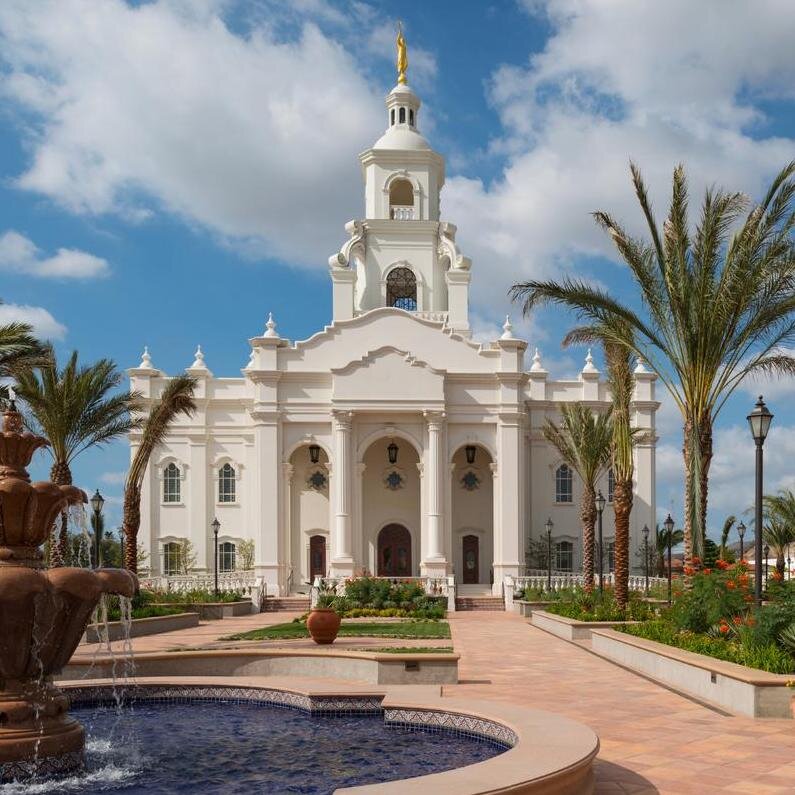All religions have holy places, and Mormonism will soon have 20 more.
At the 191st General Conference of the Church of Jesus Christ of Latter-day Saints on April 4, 2021, President Russell M. Nelson announced the construction 20 new temples, the most ever proclaimed at one time. (The previous record was 12, announced in October 2018.)
LDS temples are reserved for the church’s most sacred rituals, including the eternal sealing of marriages and rites done on behalf of members’ dead ancestors. The words of the rituals are not written down but are guarded as what Kathleen Flake has called an “oral canon.”
From a religious standpoint, the temple is the center of the world—the axis mundi, to use Mircea Eliade’s term—where the earthly and heavenly planes intersect. Forty years ago, there were only 20 LDS temples in the world, but in recent years, the church has accelerated temple building in order to allow more of its members to experience the connection point between earth and heaven.
Utah still has more temples than anywhere else; the temples just announced include the 25th for that state. But the newly planned temples also include the first ever in Austria, Belgium, Norway, Mozambique, and Singapore, reflecting Mormonism’s increasingly global character. Much of that growth has been in Latin America: Mexico will receive its 16th temple in this latest round of construction.
Temples are just one of the ways in which Mormonism consecrates place. In a revelation received in 1831, the Prophet Joseph Smith announced that Independence, Missouri, is the “center place,” the location of the city of Zion (Doctrine & Covenants 57:2-3). Though the Saints eventually built other Zions, the millennial expectation that America is the site of the promised New Jerusalem is still expressed in the LDS Articles of Faith.
In his millennial zeal, Joseph Smith took for granted that God’s power comes down in unexpected places, including in his own life as a farm boy in western New York.
Latter-day Saint and Harvard historian Laurel Thatcher Ulrich has written movingly of this consecration of unlikely spots in an essay I assign to my “Mormonism and American Culture” class. She tells how she loves Joseph Smith’s “ecstatic recital” in Doctrine & Covenants 128:19-21. In that scriptural passage, the Prophet recounts some of the locations of his visions and revelations:
Now what do we hear in the gospel which we have received? A voice of gladness! A voice of mercy from heaven; and a voice of truth out of the earth. . . .
A voice of the Lord in the wilderness of Fayette, Seneca county. . . .
The voice of Michael [the archangel] on the banks of the Susquehanna. . . .
The voice of Peter, James, and John in the wilderness between Harmony, Susquehanna county, and Colesville, Broome county. . . .
And again, the voice of God in the chamber of old Father Whitmer, in Fayette, Seneca county, and at sundry times, and in divers places through all the travels and tribulations of this Church of Jesus Christ of Latter-day Saints!
Ulrich comments: “Joseph’s litany of homely place names, his insistence that the voice of God could indeed be heard on the banks of an ordinary American river or in the chamber of a common farmer, gives his message an audacity and a power that cannot be ignored.”
That same audacity, the vivid belief in what Eliade called the “incursion of the sacred into profane space,” is what drives the current LDS campaign of temple building around the world. It also kindles my scholarly fascination—this notion that God’s power can be called forth to make even the most unassuming of places holy.
© 2021 by Peter J. Thuesen. All rights reserved
Further Reading
Mircea Eliade, Images and Symbols: Studies in Religious Symbolism, trans. Philip Mairet (1952; reprint, Princeton, N.J.: Princeton University Press, 1991).
Kathleen Flake, “‘Not to Be Riten’: The Mormon Temple Rite as Oral Canon,” Journal of Ritual Studies 9, no. 2 (1995): 1-21.
Laurel Thatcher Ulrich, “Lusterware,” in A Thoughtful Faith: Essays on Belief by Mormon Scholars, ed. Philip L. Barlow (Centerville, Utah: Canon Press, 1986)

